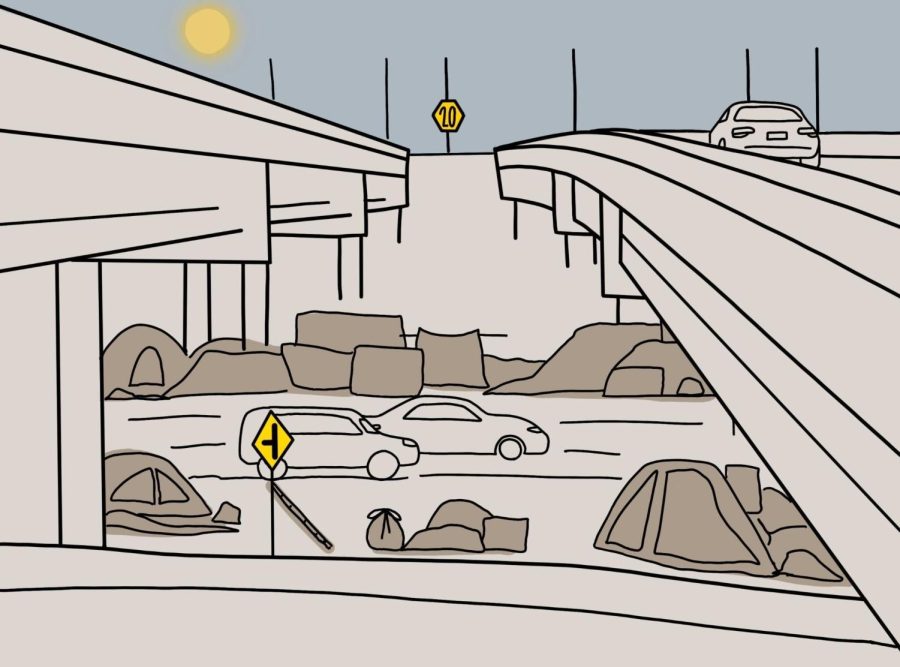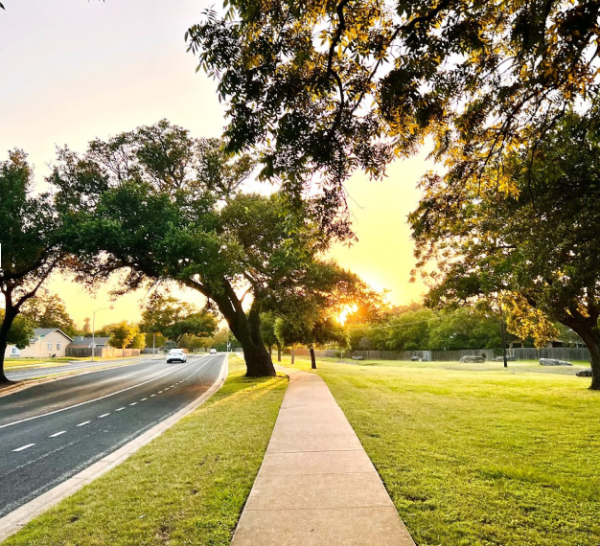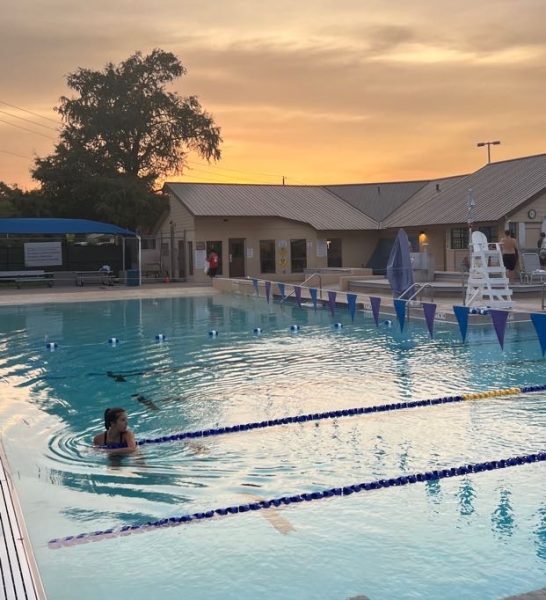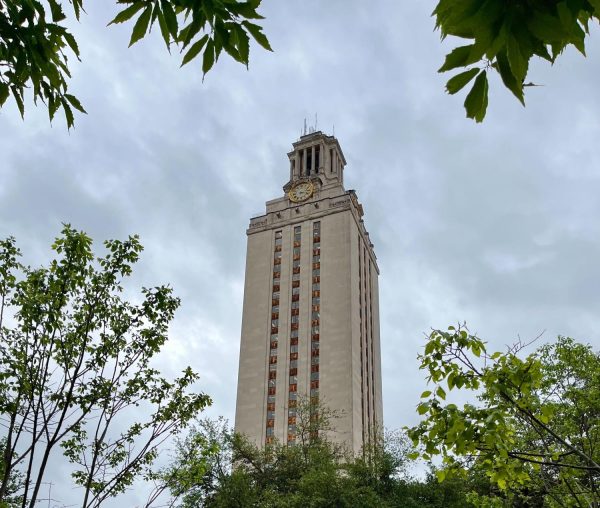Austin’s Homeless Resurgence After Camping Ban: A Look Into Long Term Solutions
Following a state-wide camping ban signed in 2021, the Austin homeless population continues to grow.
Tents dot the urban landscape of North Austin, constant reminders under every overpass of the housing situation. Homelessness has been a broad and highly debated local issue for years, especially in recent years as Austin has seen a resurgence of the homeless population.
In an attempt to combat this, Greg Abbott signed a state-wide camping ban in July 2021, initiated later that year in September. Under this ban, people experiencing homelessness can face fines up to $500 and could be charged with a Class C Misdemeanor.
Despite this policy, Austin’s homeless population has escalated: in October 2022, the Austin ECHO (Ending Community Homelessness Coalition) estimated at least 4,611 people experienced homelessness in Austin or Travis County. Many attempts from the government to aid the homeless demographic have been initiated, ranging from the installment of shelters to free public health services. These policies are often costly, but despite the money invested into aiding this issue, some locals argue that these services are short-term, and do not sufficiently accommodate the large homeless population.
In a recent survey, Westwood students provided their opinions about the current homeless situation.
“A ton of money is spent giving one meal to each individual homeless person which can only be temporary help,” said Kristian Vasquez ‘23. “But in the end, [it] is just money wasted. We need to use the millions of dollars for better solutions.”
In 2021, the government spent $68.7 million toward homeless aid, but much of this money was dedicated to short-term solutions, like emergency shelters rather than semi-permanent ones. This can lead to citizens believing that the homeless receive adequate aid.
“We deliver aid in the wrong ways,” an anonymous student said. “We spend a whole lot of money yet no meaningful change is being made.”
Misconceptions from the public only aid in the misinformation surrounding homelessness: some who responded to the survey said that adequate aid is provided, but drug and other substance addictions interfere with help. Stereotypes such as these in the public could hinder the homeless demographic from receiving the help necessary.
“There is too much hate on the unhoused population,” Tatyana Volobouev ‘23. “[There is] a sense of disdain which leads to them receiving less help which continues the cycle [of] being unhoused.”
While opinions regarding whether the government isn’t offering enough long-term solutions vary, the general consensus is local leaders have the capability to do more.
“There are a lot more things people in power could be doing about our current homelessness situation that simply choose not to,” an anonymous student said.
The solution to homelessness appears straightforward: to create more affordable housing. Yet, the reality is homelessness is a much more complex issue with no such quick fix. Offering temporary shelters and free resources have been proven to be somewhat effective. However, there are more long term fixes that have been discussed in other cities, including rapid re-housing, a system that provides short-term rental aid. This solution has been proven effective for ending homelessness, as it helps homeless people obtain permanent housing. Furthermore, programs like re-housing have aided them in battling other issues that may have caused their homelessness, like unemployment and substance abuse. Other paths to end homelessness are also being considered, including some in which employment is prioritized, and housing opportunities can then follow.
“We should put into place [preferred] hiring practices at entry level jobs with the government subsidising a portion of their wages much like we do with disabled people,” an anonymous student said. “This could give [homeless people] the opportunity to [get] back on their feet.”

Class of 2025
Looking forward to another year as a part of Student Press, I am especially excited to be serving as Campus News Editor for an organization...

Class of 2024
I look forward to designing graphics this year, you can always find me in the caption :)






